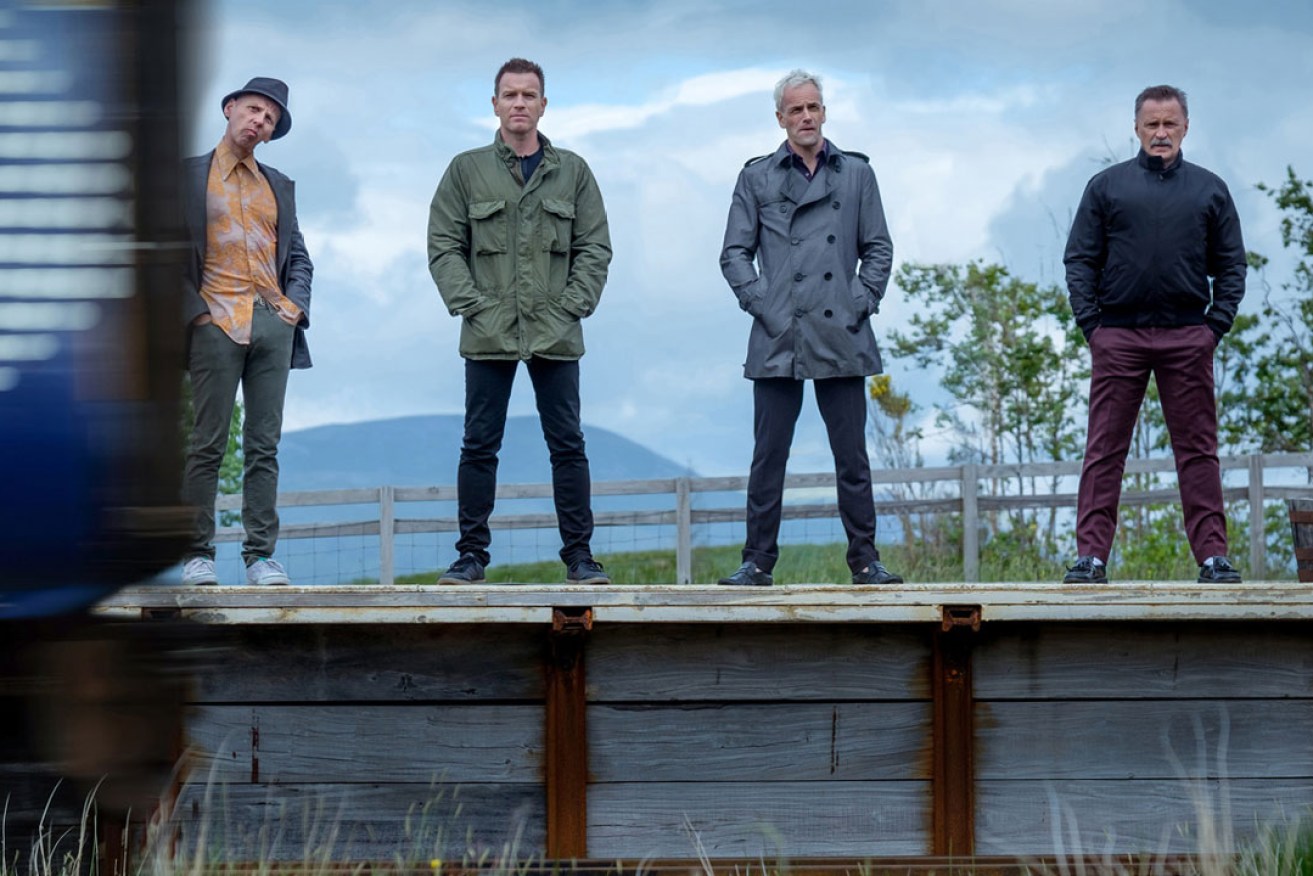Film review: T2 Trainspotting
Danny Boyle’s original Trainspotting film shocked audiences with its violence and graphic commentary on 1990s Scottish drug culture, but it also won a legion of fans. So how does the sequel stack up?


It’s been 20 years since Ewan McGregor’s sneakers tore down the streets of Edinburgh to the beat of Iggy Pop’s “Lust for Life” in the iconic opening scene of Trainspotting – a film which quickly became a cult classic.
T2 Trainspotting, the much-anticipated sequel, opens with McGregor’s trainers pounding away on a treadmill, setting the scene for how much has changed for the four anti-heroes in the two intervening decades.
McGregor’s Mark Renton, in the wake of a near-death experience and resultant mid-life crisis, finally returns to Edinburgh 20 years after ripping off his mates and fleeing to Amsterdam.
He finds Spud (Ewen Bremner) still struggling to kick his heroin habit and on the brink of suicide. Simon or “Sick Boy” (Jonny Lee Miller) is nursing old grudges while running his aunt’s derelict pub and supplementing his income as a pimp and blackmailer.
Begbie (Robert Carlyle), unsurprisingly, has spent the intervening years in prison and has put the time to use plotting both his escape and violent revenge against Renton for his betrayal.
The film draws on both Irvine Welsh’s novels, Trainspotting (1993) and its sequel Porno (2002), and screenwriter John Hodge employs the same successful technique in this sequel as he did in the original film – adapting a series of short stories told from various characters’ points of view into one coherent storyline.
It’s easy to forget how shocking and innovative director Danny Boyle’s original film was to audiences back 1996. The Scots dialect, violence and depiction of intravenous drug use combined to create a definitive commentary on 1990s drug culture.
While T2 may lack the raw shock value of its predecessor, it is definitely a worthy sequel. Boyle respects the grittiness of the original without attempting to revisit it and instead depicts its improbably sympathetic antiheroes as ravaged not by drug use so much as by middle age and disappointment.
In the same way that Trainspotting transformed the four protagonists into vibrant characters rather than downtrodden junkies, so too does T2 Trainspotting manage to elevate desperate protagonists into sympathetic and empowered individuals.
At its heart, T2 is a film about memory, friendship and arrested emotional development. Spud, this reviewer’s favourite character in both the novels and films, comes into his own in the sequel. Bremner’s ability to capture his fragility is brilliant, revealing Spud’s depth and resilience beneath the gormless façade.
Despite the story not being quite as shocking as the original, audiences can rest assured that the plot is still brimming with blackmail, prostitution, drug use, addiction and blood-thirsty revenge. For those coming to this film without having seen the 1996 original, the structure, clever use of flashback snippets and shuffling of timeframes will make following the plot straightforward. You can definitely appreciate the sequel without seeing the predecessor.
For this film lover, who considered Trainspotting to be a touchstone piece of 20th-century cinema, T2 Trainspotting was a welcome reunion with much-loved characters delivered with a distinctly 21st-century edge. You won’t be disappointed.
Rachael Mead has also reviewed the stage production Trainspotting Live, which is currently showing as part of the Adelaide Fringe. Read that review here.




